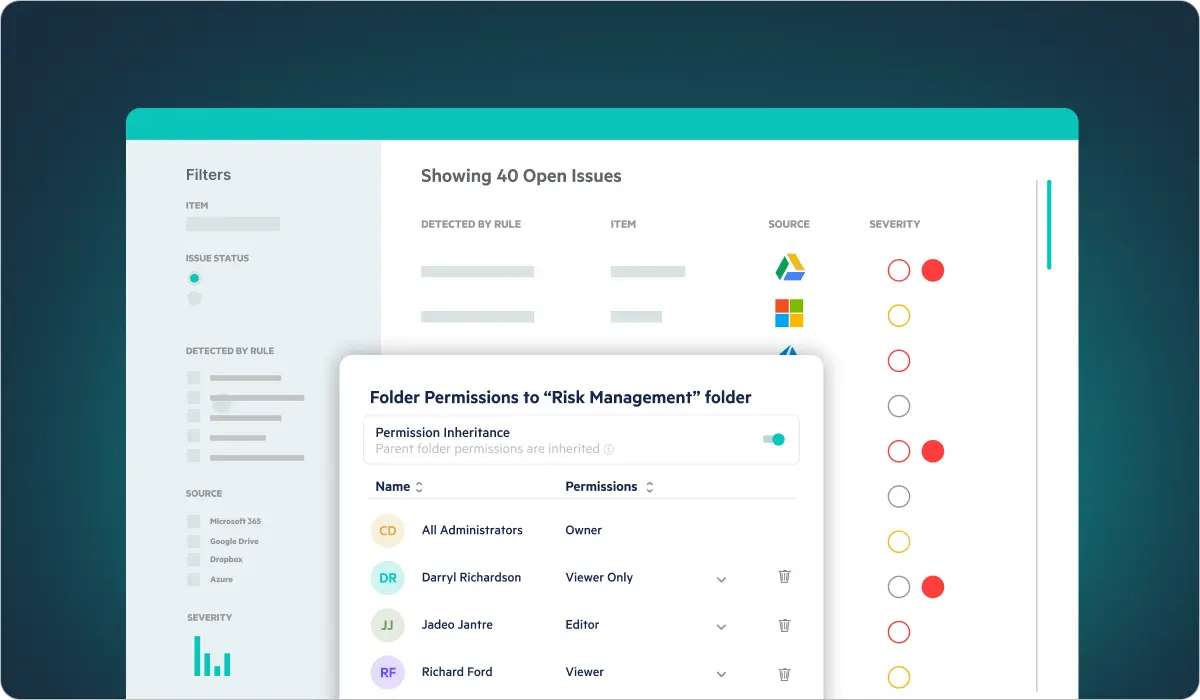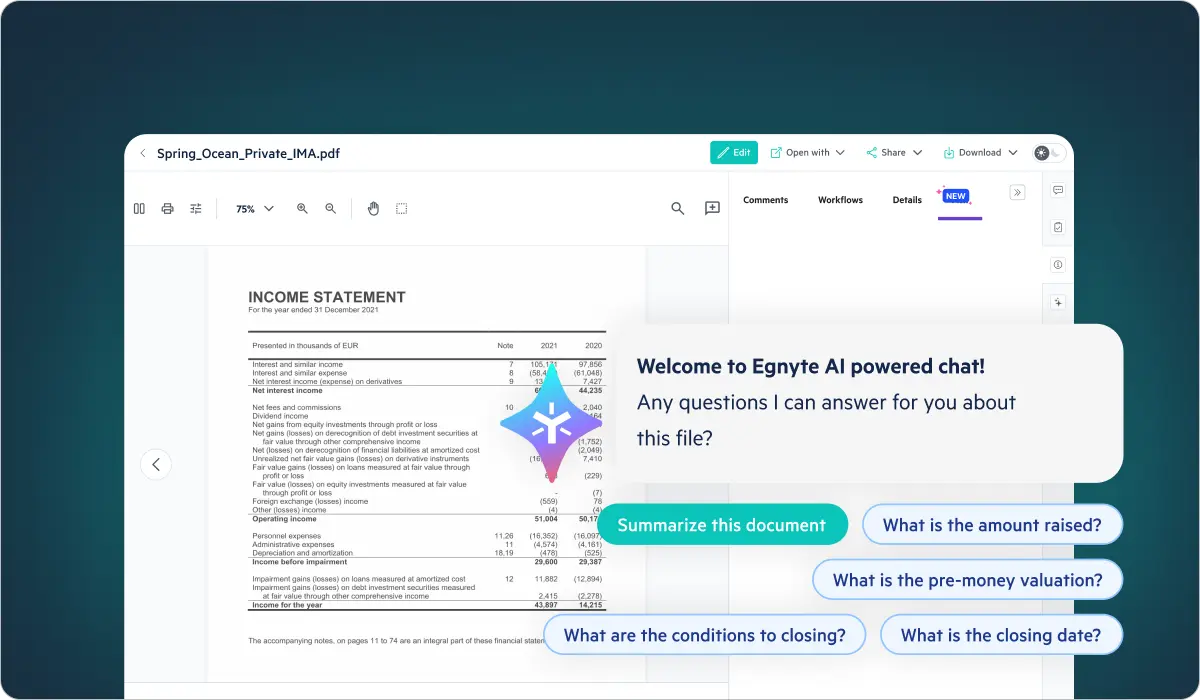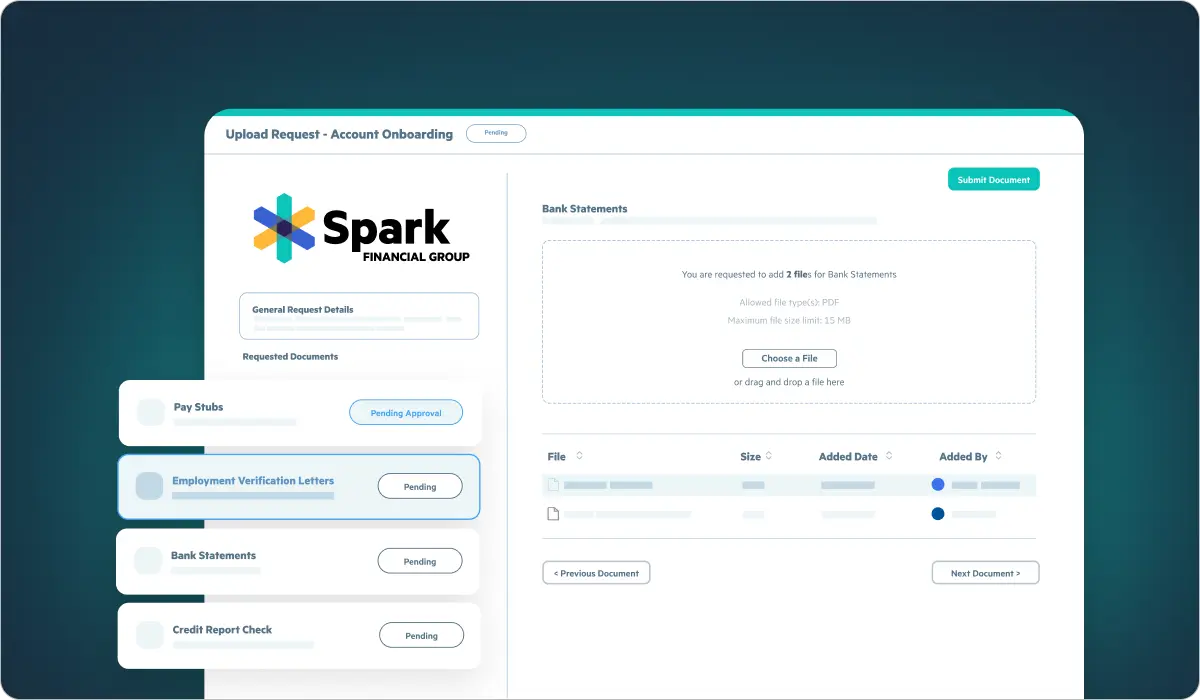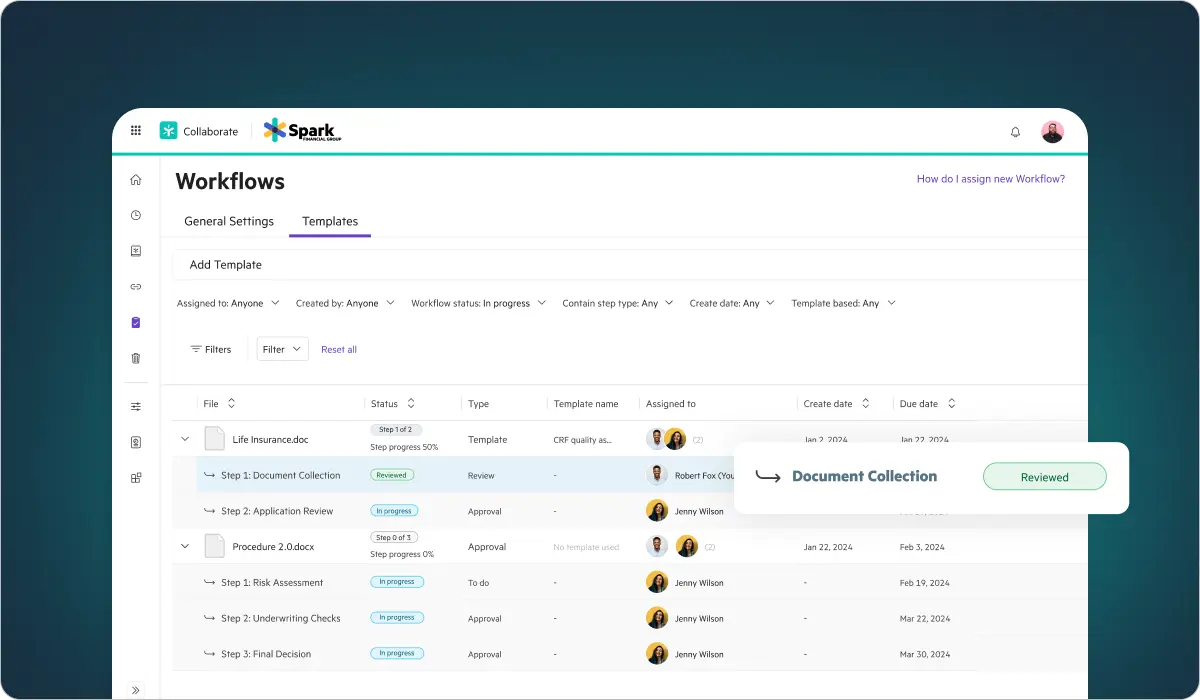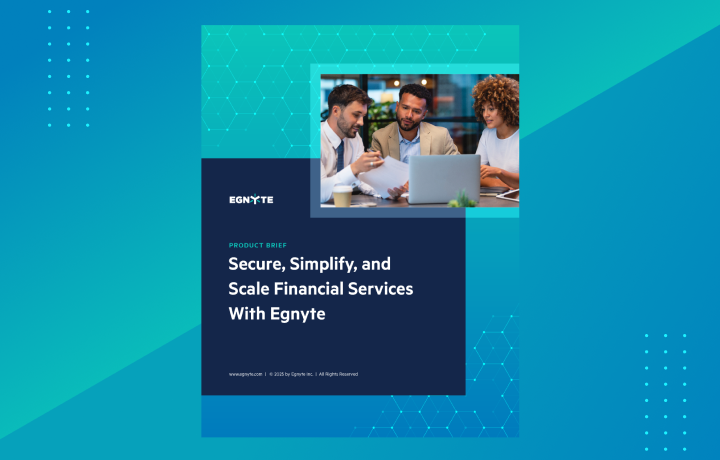Content Cloud for Financial Services
Streamline document workflows, leverage AI-driven document insights, and maintain compliance seamlessly in the content cloud.
Trusted by 22,000+ Content-Critical Businesses Worldwide
Unified Financial Services Document Management and File Sharing
Plans For Financial Services Companies of All Sizes
Business
- File Versioning
- Folder Templates
- Desktop and Mobile Access
- Single-Step Workflows
Enterprise Lite
- Multi-setup Workflows
- Legal Hold
- Mobile & Desktop Device Controls
- Role-Based Access Control
Ultimate
- AI Copilot, AI Search, and AI Workflow
- PDF markup and e-signature
- Sensitive data classification
- Snapshot & recovery (90-days)
Featured Solutions
Document PortalSimplify and secure document requests, collection, and sharing for client onboarding, new account opening, and more.
Simplify and secure document requests, collection, and sharing for client onboarding, new account opening, and more.
Egnyte SignLegally binding electronic signatures directly in Egnyte workflow.
Legally binding electronic signatures directly in Egnyte workflow.
Document RoomProtect highly confidential files in an ultra-secure data enclave for M&A, capital raise, investor relations, and more.
Protect highly confidential files in an ultra-secure data enclave for M&A, capital raise, investor relations, and more.
Egnyte Supports Industry Associations






Trusted By Leading Financial Services Companies
Wealth Management
Learn how EP Wealth uses Egnyte to protect confidential client data and support secure file sharing.

Private Equity
Learn how Rockbridge maintains control over investment data with Egnyte’s AI-powered discovery and classification.

Insurance
Learn how UK-based PIB Group uses Egnyte to manage risk and protect data at its source.

Banking
Learn how SouthStar Bank controls the sharing of sensitive information without inhibiting organizational collaboration.


